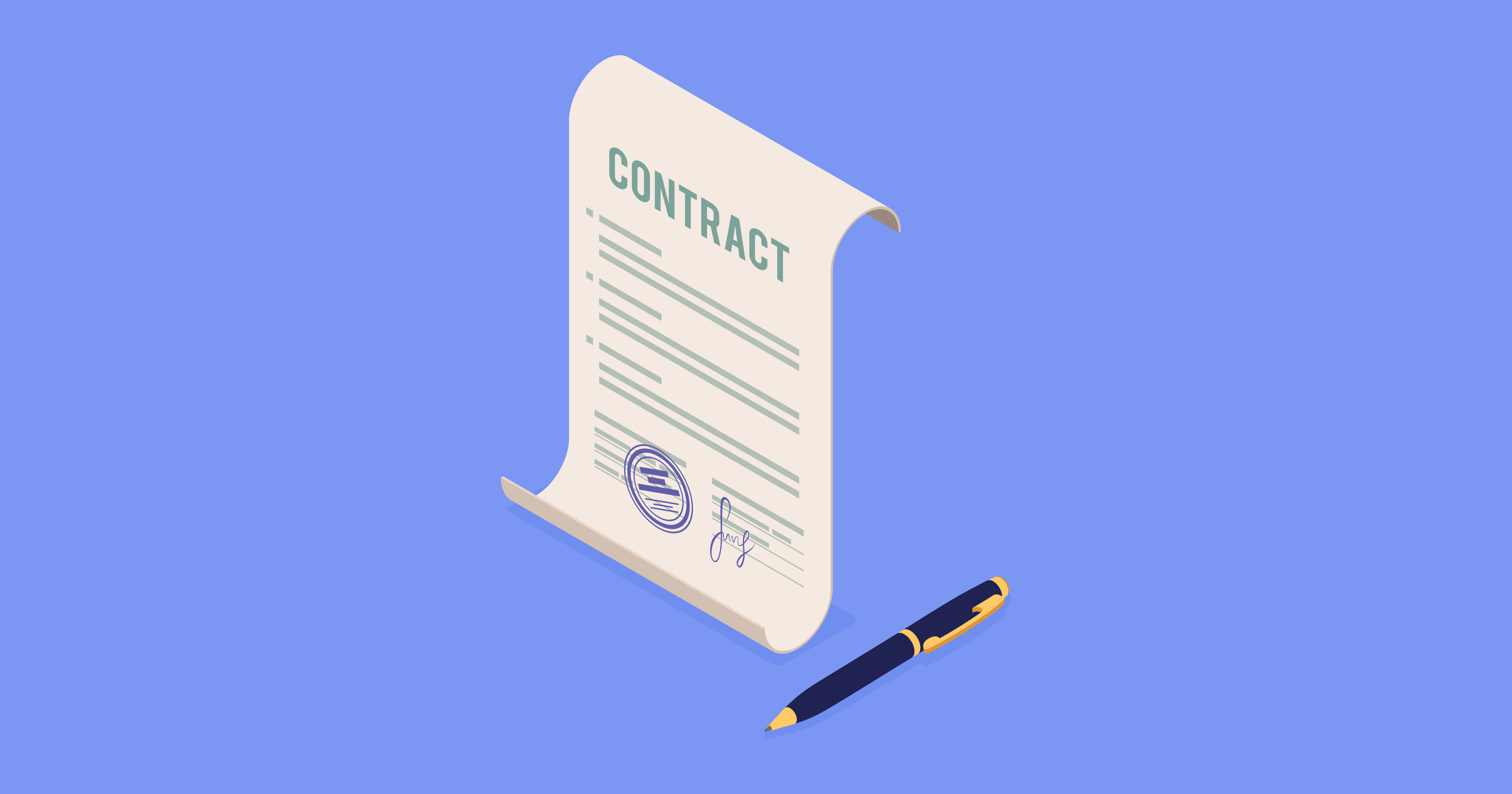As part of our comprehensive career services here at mselect, we'd like to introduce you to our job terms glossary. It's a detailed list of terms you will encounter during your job search, application and placement.

Active Candidate (and Passive Candidate)
An active candidate is currently looking for a new job. They are applying for roles and engaging with recruiters. A passive candidate is not actively searching but may be open to new opportunities if approached by an employer or recruiter.
Annual Leave
Paid time off (holiday entitlement) granted to employees by their employer. Annual leave entitlement will vary based on the country you work in and the hours you are contracted for.
Applicant Tracking System (ATS)
This software helps employers and recruiters manage the many job applications they receive. It scans CVs for keywords and ranks candidates by relevance to the initial job description. Optimising your CV for ATS can increase your chances of being shortlisted.
Assessments
Tests used by employers to measure a candidate's skills, personality, or suitability for a role. They can include aptitude tests, personality assessments, or work simulations.
Background Check
A verification process where employers check a candidate's criminal record, employment history, and sometimes financial background before making a final hiring decision.
Behavioural Interview
A structured interview format where candidates answer questions based on past experiences. Employers use the STAR (Situation, Task, Action, Result) method to assess problem-solving and adaptability. See below for a definition of the STAR method.
Benefits
Non-salary perks provided by an employer, such as health insurance, pensions, paid holidays, bonuses, flexible working, or company discounts.
Blind Screening
A recruitment method where personally identifiable details (e.g., name, age, gender, and education) are removed from applications to reduce bias in the hiring process.
Career Assessments
Tools that help individuals identify their skills, strengths, and career preferences. Examples include psychometric tests like the Myers-Briggs Type Indicator. See below for a definition of the MBTI. Here is our complete guide to assessing your career.
Career Change
The process of transitioning from your current job/industry into a new job role or industry. This often requires retraining, reskilling, or gaining new qualifications.

Career Development/Continued Professional Development (CPD)
The ongoing process of gaining new skills, experiences, and qualifications to progress in a career. It can involve mentorship, training, or pursuing higher education. Here is our free guide to the importance of continued professional development.
Career Goals
Your vision for your future career path. A great answer to the interview question, "Where do you see yourself in 'x' years." Here's how to set yours!
Career Objective/Job Objective
A short statement in a CV or cover letter that outlines a candidate's career goals and what they aim to achieve in a particular job or industry.
Case Interview
A job interview format used mainly in consulting, where candidates solve business problems or scenarios to demonstrate their analytical and problem-solving skills.
Code of Conduct
A set of guidelines that define the expected behaviour of employees within a company, covering ethics, professionalism, and workplace rules.
Code of Practice
A formal document outlining best practices and ethical standards within a specific company, industry or profession.
Cold Emailing
Contacting hiring managers or recruiters directly by email without a prior connection or introduction.
Company Research
Gathering information about a company before applying for a job or attending an interview. This includes reviewing the company's website, culture, financial performance, and employee reviews.
Compensation Package
The total value of an employee's remuneration, including salary, bonuses, benefits (see above), and additional perks such as stock options or wellness programmes.

Compressed Work Week
A working arrangement where employees work their full-time hours in fewer days (e.g., four longer workdays instead of five).
Contingent Recruitment
Firstly, contingent recruitment can be a hiring approach where a recruitment agency or external firm is paid a fee only if they successfully place a candidate with the employer. Secondly, can be a term for hiring temporary or permanent staff through a third party where agencies are paid on a monthly basis.
Contract Employee/Contract Worker/Freelancer
A professional engaged for a fixed term or specific project but not a permanent employee.
Contract of Employment
A contract between an employer and an employee outlining the full terms and conditions of employment, including salary, benefits, and notice periods. This document is legally binding.
Contract-to-Permanent
Where employment is defined as a temporary contract with the possibility of being made permanent if the employee meets their employer's performance expectations.
Contractor
In individual employment terms, a contractor is an individual who provides temporary or project-based work for a business. They may or may not be hired via a third-party provider. Contractors can work in various fields, such as construction, consulting, or information technology.
Corporate Culture
The values, behaviours, and attitudes that define a company's work environment. It includes leadership style, communication practices, and work-life balance.
Counter Offer/Counter proposal
An offer made by an employer to retain employees who have received employment offers elsewhere, usually involving a salary increase or improved benefits.
Cover Letter
A personalised letter submitted alongside your CV that introduces you to an employer, highlighting your qualifications, experience, and interest in the role. A strong cover letter complements a CV by providing additional context and a personal touch. Here's how to write yours!
Coworking Space
A coworking space is a shared office space where freelancers, remote workers, and small businesses work independently but in a community environment.
Curriculum Vitae (CV)/Resume
A short document that highlights your skills, experience, and education. It serves as the first impression for employers and should be tailored to each job application. Here's our guide to updating your CV.
Direct Report
An employee specifically employed to report directly to a manager or supervisor.
Disciplinary Procedure
A formalised process used to address employee misconduct, poor performance, or breaches of workplace policies. Employers record disciplinary outcomes in your work record.

Dismissal
The termination of an employee's contract by an employer. This can be due to misconduct or redundancy.
Diversity, Equity, and Inclusion (DEI)
A hiring and workplace philosophy that promotes fair treatment, equal opportunities, and representation of diverse backgrounds. Many organisations prioritise DEI initiatives to build an inclusive workforce.
Elevator Pitch
A short, persuasive speech (typically 30–60 seconds) that introduces a candidate's background, skills, and career goals. It is useful for networking and job interviews.
Employment Gaps
Periods when a person was unemployed. These can be explained on your CV by detailing relevant activities that you undertook during this time, like freelancing, volunteering, or further education.
Employment Permit
A legal document allows a non-citizen to work in a specific country for a specific period. It may include specific details for the type of work you undertake.
Employee Onboarding
Integrating a new hire into a company includes training, orientation, and setting expectations. Effective onboarding should give you a full understanding of your job and the company's expectations, as well as clarity around benefits.
Essential Job Functions
The critical duties and responsibilities that are crucial to the performance of a particular job role. These functions are the core tasks an employee must perform effectively to meet the position's requirements and are usually associated with job or department key performance indicators. Key Responsibilities or tasks are created based on essential job functions.
Executive Search (Headhunting)
A specialised recruitment service focused on identifying high-level executives or niche professionals. Headhunters actively seek out top talent rather than relying on applications.
Exit Interview
A formal conversation between an employer and a departing employee aimed at gathering feedback about the company and identifying areas for improvement in retention and culture.
Flexible Work Arrangements
Workplace policies that allow employees to work remotely, have flexible hours, or engage in hybrid work models.
Fixed-Term Contract
An employment contract with a set end date (typically used for temporary projects or maternity cover).

Freelancer/Consultant/Independent Contractor
A self-employed professional who provides services to multiple clients without being an employee of any one company. Freelancers manage their own taxes and work schedules.
Full Time
A standard working arrangement, typically 48 hours per week in the Middle East.
Gig Economy
A growing market characterised by short-term contracts or freelance work rather than permanent employment.
Green Jobs/Green-Collar Jobs
Jobs focused on environmental sustainability, such as renewable energy, conservation, and climate change mitigation roles.
Group Interview
An interview where multiple candidates are assessed at the same time is often used for customer service or graduate recruitment.
Hard Skills
Technical or specialised skills specific to a job or industry, such as programming, data analysis, or graphic design. Hard skills are often measurable and acquired through education or training.
Hidden Job Market
Jobs that are not publicly advertised but filled through internal hiring or networking. Job seekers can access this market by actively building professional relationships or working with workforce specialists.
Home-Based (Work-at-Home) Careers
Jobs that allow employees to work remotely, either full-time or part-time.
Industry Research
The practice of researching and understanding an industry, its key players and the jobs available. Here's our guide to researching an industry.
Internships
Temporary placements, often for students or recent graduates, that provide practical experience in a particular industry. These can be paid or unpaid.

Job Application
A formal request for employment is usually submitted via an online form, email, company portal, or a recruitment agent. In case you find application or job rejection hard to manage, here is a helpful guide to keep going with your job search.
Job Alerts
Automated notifications from job boards or company websites that inform candidates of new vacancies matching their preferences.
Job Board
A website where employers post job vacancies and job seekers apply. These can sometimes be industry or job-function-specific. Popular platforms include LinkedIn, which is a very broad job board. Here's our guide to using job boards and tools. Plus how to fit the best fit for you.
Job Description
A detailed caption that outlines the responsibilities, qualifications, and expectations of a role. Understanding what a job description is asking helps you to tailor your application, CV and cover letter accordingly.
Job Fair
An event where job seekers meet employers, recruiters, and industry representatives to learn about job opportunities.
Job Interview
A formal meeting between the hiring manager and a candidate to establish if they are right for the job. We have some guides to help you with your interviews:
● What to do after your job interview
Job Purpose
An outline of the role and its place within a team/company.
Job Satisfaction
A measure of how fulfilled and happy an employee feels in their role, based on factors such as work environment, salary, and career growth.
Job Scams
Fraudulent job offers are designed to steal money or personal information from job seekers. Warning signs include requests for payment, vague job descriptions, and lack of a verified company presence. Here's how to avoid online job scams.
Job Search Strategy
Deciding what jobs you want to apply for by defining:
● Why you are looking for a new job
● What you are looking for
● Where you want to be based
● When you want to work (part-time, full-time, day or night)
● How you will use resources to find your next job
You can read more about a job search strategy here.

Job Shadowing
An opportunity for individuals to observe a professional in their workplace to gain insight into a particular role or industry.
Job Sharing
A flexible working arrangement where two employees share the responsibilities of one full-time job.
Job Skills
The technical and soft skills required for a specific job role.
Job Responsibilities
A detailed list of task requirements.
Job Requirements
A comprehensive list of qualifications, skills and education required to apply for a job.
Key Performance Indicators (KPIs)
Key Performance Indicators are measurable values demonstrating how effectively an organisation achieves its key business objectives. For example, these can be measures based on performance over time that help make informed decisions to improve processes and outcomes.
Key Responsibilities
The primary duties and tasks that an individual is expected to perform as part of their role or position.
With over a billion users, LinkedIn is a social media platform connecting job seekers to companies looking for employees. Here's our complete guide to creating a compelling LinkedIn profile.
Myers-Briggs
A personality assessment tool used to understand individual work preferences and strengths. Some employers use it for team-building and career guidance.
Negotiation
The process of discussing salary, benefits, or job responsibilities before accepting a job offer. Here's how to respond to a job offer and negotiate terms.
Networking
The process of building professional relationships to uncover job opportunities. This can be done through industry events, LinkedIn, or professional associations. Here's our free guide to networking.
Networking Event
A professional gathering where individuals connect to exchange industry knowledge, build relationships, and explore job opportunities.

Notice/Resignation
Formal communication of resignation from an employee or termination from an employer. Here is our guide to resigning professionally.
Notice Period
The length of time an employee must work after giving notice before leaving a job, typically between one week to three months.
Offer Letter
A formal document from an employer outlining the job offer, including salary, benefits, and start date. Candidates should review and negotiate, if necessary, before accepting.
Open-Ended Contract
A permanent employment contract with no fixed end date.
Outsourced/Outsourcing
Delegating specific tasks or services to external companies or individuals rather than handling them in-house. For example, at mselect, we outsource contingent and permanent staffing to the companies we work with.
Outsourced Manpower
Externally hired individuals who become contingent or permanent hires in a business. At mselect, we offer technical and non-technical staffing to our global brands.
Overtime
Additional hours worked beyond the standard contract are sometimes paid at a higher rate.
Paid Time Off/Paid Leave
Leave that employees can take while still receiving their salary, including annual leave, sick leave, and parental leave.
Panel Interview
An interview format where multiple interviewers assess a candidate at the same time.
Part-Time
A standard working arrangement, typically 20-30 hours per week in the Middle East.
Pension
A long-term savings scheme that helps employees save for retirement. Pension schemes will vary from country to country.
Performance Review
A formal assessment of an employee's work performance, usually conducted annually or biannually. Reviews provide feedback, set goals, and determine salary adjustments or promotions.

Permanent Hire
Candidates employed long-term with no predetermined end date for their employment with an employer. This type of hire typically enjoys benefits such as job security, health insurance, retirement plans, and other perks offered by the employer.
Personal Branding
Marketing yourself as a professional in a particular field, often through social media, a personal website, or industry events. Here's our guide to building a professional online presence.
Retained Recruitment
A process where a client pays a recruitment agency or third party to exclusively work on filling a specific, (usually) high-level executive position.
Portfolio
A collection of work samples showcasing a candidate's skills, experience, and achievements. Portfolios are commonly used in creative industries such as design, writing, and marketing, as well as in professions like software development and photography.
Probation Period
A trial period (typically three to six months) during which a new hire's performance is evaluated before confirming permanent employment.
Recruiter vs. Hiring Manager
● Recruiter: A professional responsible for finding and screening candidates.
● Hiring Manager: The person within the company who makes the final hiring decision.
Recruitment Agency
A business that assists companies in finding their employees (some may be industry or job-function-based). You can find our latest jobs here.
References
A handful of quotes from individuals who can vouch for a candidate's skills, experience, and work ethic. Employers typically request references from previous managers, colleagues, or academic supervisors to verify a candidate's background before making a job offer.
Relocation Assistance
Employers may provide support to help new hires move to a new location for work, often including reimbursement for moving expenses or temporary housing. This is called Relocation Assistance and may be detailed in your benefits package.
Remote-First Company
A company where remote working is the default, with little or no requirement to work from an office.
Remote-Friendly Company
A company that allows remote work but still has office-based roles.
Results-Only Work Environment (ROWE)
A company that chooses to assess employees based on their results rather than the hours they work. This approach promotes flexibility by allowing employees to complete their tasks on schedule as long as they meet performance expectations.

Right to Work/Visa/Work Permit
Legal permission to work in a specific country, sometimes with a specific employer, for a set time period. Employers may require proof of right to work (such as a visa or work permit) before making a job offer.
Rotation
How many days on and off of the job. For example, 5/2 means you must work 5 days and then have 2 days off. For 4/3, you must work 4 days and then have 3 days off.
Screening
The initial stage of evaluating job applicants, typically through resume reviews and phone interviews. Successful candidates move forward to the interview stage.
Screening Interview
Some recruiters will conduct a phone or video screening interview to assess whether a candidate meets the basic qualifications before progressing to the company interview stage.
Skill Set
The soft and technical skills you have developed in your career or through education and training.
Soft Skills
Non-technical (or tangible) skills such as adaptability, communication, teamwork, and problem-solving are valuable in any role. Employers often assess these skills during interviews.
STAR-Method
A structured technique for answering competency-based interview questions. It stands for:
● Situation: The context of your example.
● Task: The challenge or goal you faced.
● Action: The steps you took to resolve the situation.
● Result: Share the outcome and any key takeaways.
Temporary Workforce
Employees who are hired for a limited period, often through staffing agencies, to fill short-term needs such as seasonal demand, special projects, or covering staff absences. Temporary workers may be employed on fixed-term contracts or as freelancers.
Transferable Skills
Skills gained from previous jobs, education, or life experiences that you can apply to a new role (sometimes in a new company). Examples include leadership, project management, and critical thinking. Here's how to find yours!
Unconscious Bias
The unintentional preference or prejudice that influences hiring decisions is often based on factors like gender, age, or ethnicity.

Virtual Interview
A job interview via video conferencing platforms like Zoom, Microsoft Teams, or Google Meet. These are becoming increasingly common, allowing employers to assess candidates without requiring them to travel.
Vocational courses
Training designed to develop your skills for a specific career or job function. You can find our courses here.
Workforce mobility
The ability and flexibility of employees to move between different roles, locations, or even organisations as needed. At mselect, we also have a workforce mobility department that handles our contingent and EOR-placed candidates.
Work/Life Balance
An approach to developing and maintaining a 'balance' between work responsibilities and personal life. A practice which is crucial for overall well-being and job satisfaction.
